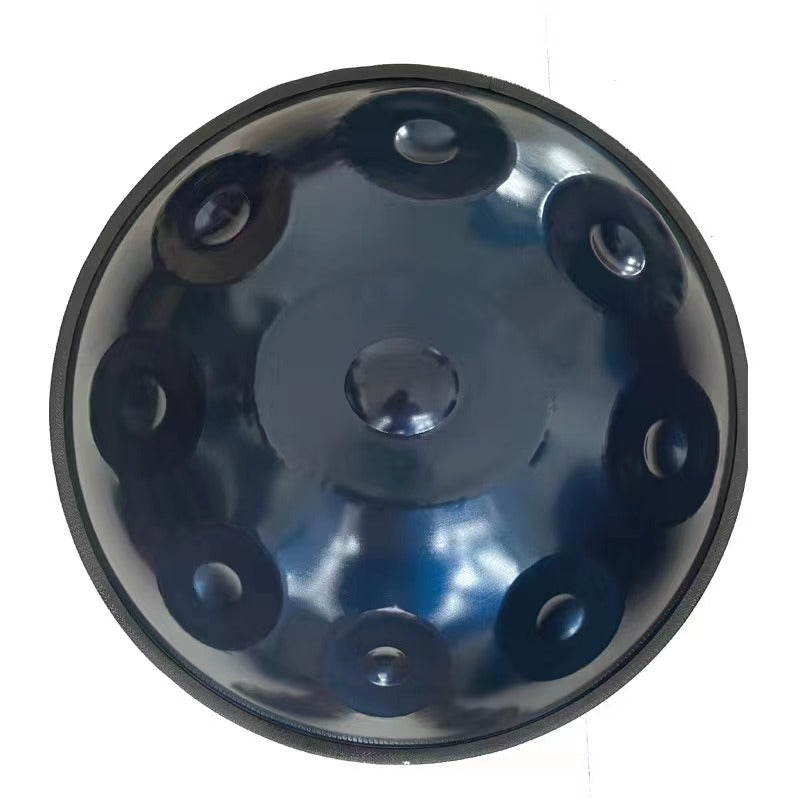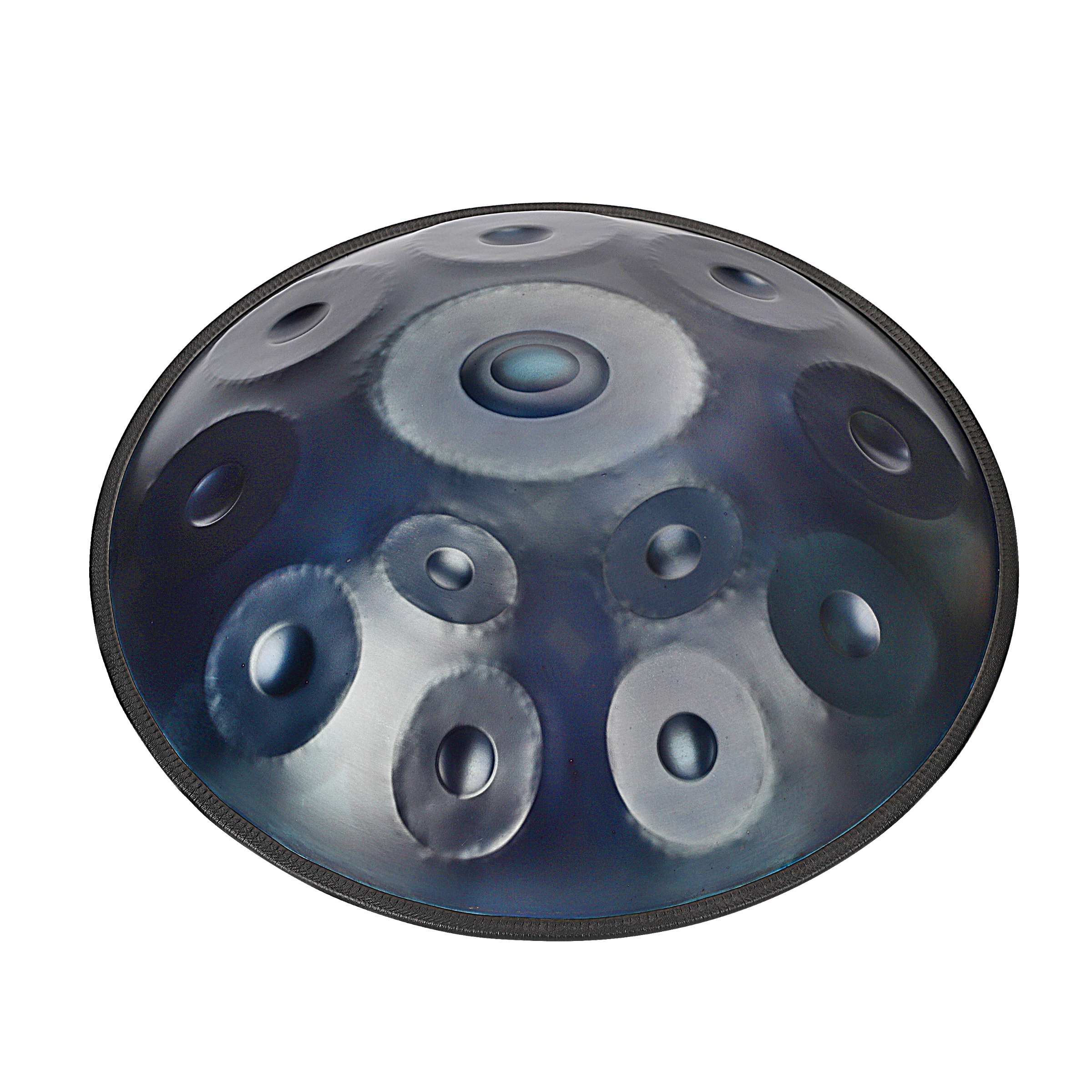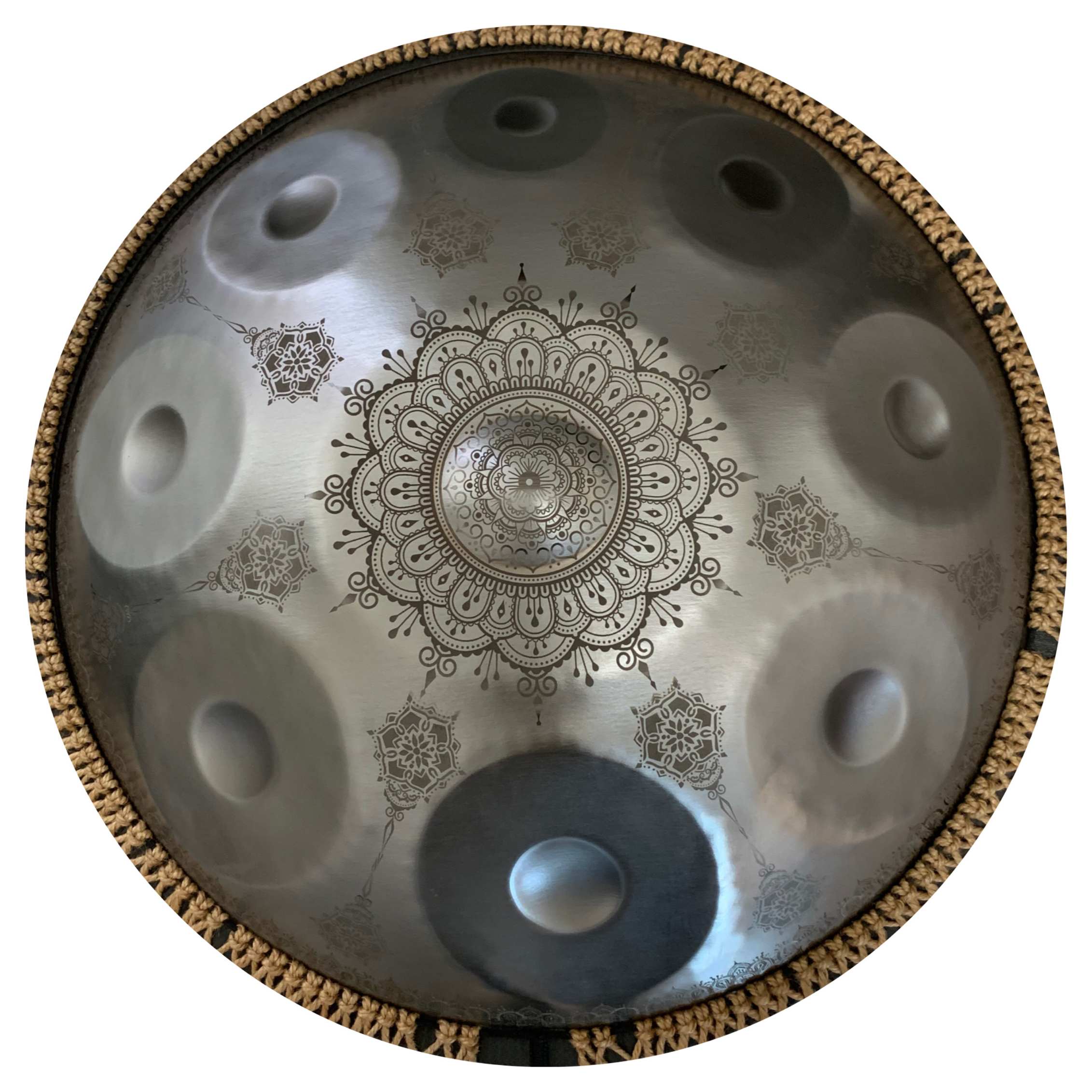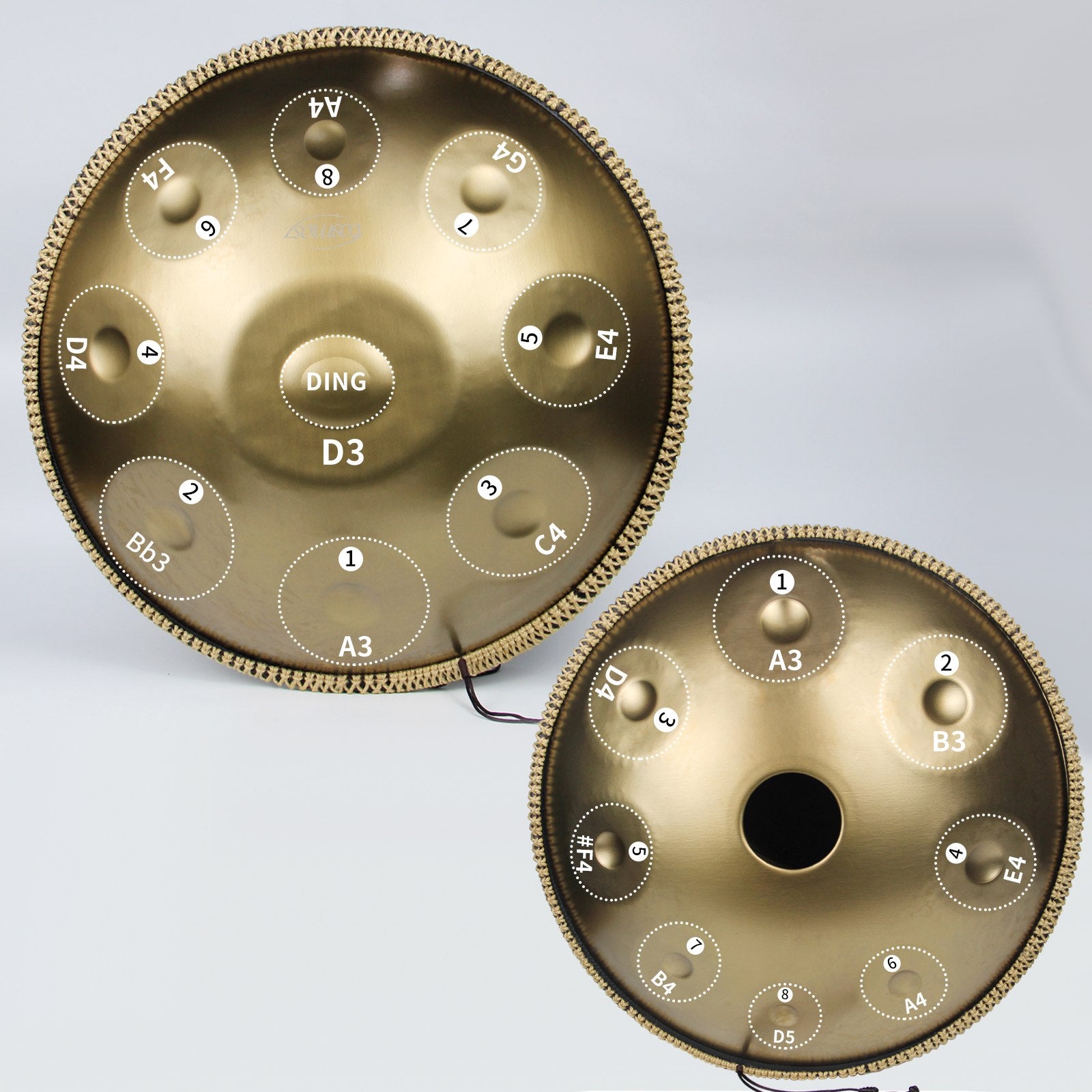Es gibt so viele fantastische Handpans da draußen; wissen Sie, wie man die beste für sich auswählt? Überprüfen Sie diesen Leitfaden, um einzigartige Handpans zu entdecken.

Handpans werden aufgrund ihres einzigartigen Klangs und ihrer Fähigkeit, einen entspannenden und meditativen Zustand herbeizuführen, immer beliebter. Allerdings sind nicht alle Handpans gleich geschaffen. Wenn Sie die besten authentischen Handpans und Zubehör suchen, sind Sie bei uns genau richtig.
Bevor wir beginnen, möchten wir Sie daran erinnern, dass dies ein schwieriges Thema ist, da nicht jeder die gleichen Vorlieben bei einem Handpan hat. Der eine möchte einen gefilzten Klang, während der andere einen wirklich hellen Sound bevorzugt. Einige Menschen genießen den Klang von schlagendem Metall, während andere ihn um jeden Preis vermeiden.
Daher ist jedes Handpan einzigartig. Dies bietet uns eine breite Palette von Optionen. Allerdings macht es auch unmöglich, definitiv zu behaupten, dass ein Handpan einem anderen überlegen ist oder dass eine bestimmte Marke die beste ist. In diesem Beitrag werden wir Ihnen sagen, was wir für ein ausgezeichnetes Handpan halten. Mit diesen Informationen können Sie ein hochwertiges Handpan auswählen, das gut zu Ihnen passt.
Was ist eine Handpan?
Handpans, auch bekannt als „Hang Drums“, „pantam“ und „UFO Drums“, sind Musikinstrumente, die aus zwei konvexen Stahlblechen bestehen, die zusammengelötet sind. Sie wurden 2007 von Felix Rohner und Sabina Schärer in Bern, Schweiz, erfunden. Einige argumentieren jedoch, dass sie in den 1930er Jahren in Trinidad und Tobago als Anpassung eines anderen Stahlpfannen-Trommels entwickelt wurden. Handpans haben aufgrund ihrer Einzigartigkeit, der Qualität des verwendeten Metalls und des Fachwissens, das zu ihrer Herstellung erforderlich ist, eine Nischenindustrie geschaffen. Die Menschen zahlen einen hohen Preis für diese Instrumente aufgrund der Zeit und des Talents, die benötigt werden, um sie zu schaffen. Handpans können, ähnlich wie Gamelans, den Geist und den Körper beruhigen und ermöglichen freie Ausdrucksweise und Entspannung. Sie sind eine hervorragende Möglichkeit, Spannungen abzubauen oder sich nach einem langen Tag zu entspannen.
Wichtige Überlegungen beim Kauf eines Handpans
Tuning
Das ist das Wichtigste! Das gilt für alle Instrumente: Auf einem verstimmten Instrument zu spielen, ist unangenehm. Es ist besser, auf einem gut gestimmten $100 Ukulele zu spielen als auf einem $3.000 Flügel, der verstimmt ist.
Stellen Sie sicher, dass Ihr zukünftiges Instrument nicht verstimmt ist. 98 % der Hersteller bieten Ihnen gut gestimmte Instrumente an, aber beim Kauf von gebrauchten Geräten müssen Sie Vorsicht walten lassen.
Um die Stimmung zu überprüfen, können Sie den Hersteller besuchen, um zuzuhören und es mit einem digitalen Tuner zu testen. Wenn Sie nur ein Video Ihres zukünftigen Handpans haben, können Sie nur Ihr Gehör verwenden. Bei Unsicherheiten teilen Sie Ihr Video in Online-Gruppen, wo erfahrene Musiker Ihnen helfen können.
Der Zweck besteht nicht darin, sicherzustellen, dass es genau auf die nächste Zehntelstimme gestimmt ist. Sie müssen einfach feststellen, ob das Instrument spielbar ist oder ob es falsch klingt und neu gestimmt werden muss.
Die Qualität des Sounds
Natürlich ist das etwas subjektiv. Sie müssen sich fragen: „Wenn ich einen Ton spiele, genieße ich den Klang, den ich höre?“ Für manche erzeugt ein anständiger Handpan einen warmen Ton mit Körper und Tiefe. Trotz der Tatsache, dass das Instrument aus Metall besteht, könnten Sie den Klang, den es macht, nicht mögen.
Der metallische Klang erzeugt „bang bang/Kasserolle“. Es wird allgemein angenommen, dass je weniger man Metall hört, desto besser das Instrument ist. Darüber hinaus kann ein einfacher Schlag zwischen zwei Tönen oder zwischen dem Schulterton (flache Oberfläche um den Ding) und einem Ton das Timber der Schale selbst offenbaren. Je weniger es metallisch klingt, desto besser.
Aufrechterhalten
"Sustain" ist synonym mit "beibehalten". Im musikalischen Bereich bezeichnet dieser Begriff die Fähigkeit eines Instruments, den Klang einer einzelnen Note während des Spiels zu halten. Ein Handpan, dessen angeschlagene Note 10 Sekunden lang klingt, hat mehr Sustain als einer, dessen angeschlagene Note nur 6 Sekunden lang klingt. Sustain ist ein Qualitätskriterium, da es sowohl angenehm als auch faszinierend ist, die Töne anhalten und fliegen zu hören. Dies verleiht dem Handpan eine sehr harmonische Qualität.
Es sollte jedoch beachtet werden, dass ein Handpan mit übermäßigem Sustain unangenehm werden kann. Viele Spieler mögen das "Mega-Sustain" nicht, bei dem sich alle Töne miteinander verbinden und sich gegenseitig überlagern. Wenn Sie spielen und Ihre Anordnung ändern, möchten Sie möglicherweise, dass einige der Töne der vorherigen Anordnung schneller verstummen, da sie die Harmonie der neuen Anordnung stören.
Ein kurzer Sustain wird Musiker ansprechen, die einen percussiveren Stil bevorzugen. Ein durchschnittlicher Sustain wird die Mehrheit ansprechen, da er anpassungsfähiger ist. Schließlich wird ein langer Sustain Spieler ansprechen, die langsam spielen möchten, was ihn ideal für Entspannung und Meditation macht.
Zusammenfassend lässt sich sagen, dass Nachhaltigkeit ein Qualitätskriterium ist, das jedoch einzigartig für dein Ohr, deinen Geschmack und deinen persönlichen Stil ist. Es liegt an dir zu entscheiden, welche Dauer basierend auf diesem Kriterium angemessen ist.
Dynamik
Der Klang eines Handpans sollte klar und gut sein, selbst wenn er sehr sanft oder leise gespielt wird. Bei härterem Spiel sollten die Klangfelder nicht "übersteuern" oder anfangen zu "schreien". Ein anständiger Handpan bietet Ihnen die größte Vielfalt an Dynamik, sodass Sie sowohl sanft als auch laut spielen können.
Gleichgewicht
Ein gutes Handpan erzeugt Töne mit demselben Klang, derselben Konsistenz, nachhaltiger Dauer, Stabilität und Schallprojektion. Der zweite Punkt behandelte die Klangqualität. Die Frage ist jetzt: Produzieren alle Töne den gleichen Klang?
Ein Handpan sollte einen ausgewogenen Klang erzeugen, mit gleicher Harmonie in den Anschlagsdynamiken, dem Klang, dem Sustain und dem Lautstärkepegel aller Noten. Die Klangqualität des Handpans muss über alle seine Noten hinweg ausgewogen sein. Beachten Sie, dass einige Ungleichgewichte, wie eine Note, die härter anschlägt als andere, dem Instrument Charme und Charakter verleihen können.
Übersprechen
Dies ist eine äußerst bedeutende Anforderung. Es gibt kein Übersprechen zwischen den Noten, was bedeutet, dass sie gut "isoliert" voneinander sind und dass eine Note die nächste Note nicht aktiviert. Wir verwenden den Begriff "Aktivierung", um zu beschreiben, wenn bestimmte Klänge zusätzliche Noten zum Klingen bringen. Dieser Schritt ist wichtig, da wir möchten, dass die Noten gut voneinander getrennt sind. Wenn beispielsweise das C vibriert und das C# auslöst, wird dies Ihr Spiel beeinträchtigen.
Bestimmte „Aktivierungen“, auch bekannt als „Resonanzen durch Sympathie“, können eine Skala oder Spielweise unterscheiden und dem Instrument Charakter verleihen. Es variiert je nach Ihren Vorlieben, aber wenn ein tiefes C einen akuten Grund aktiviert, wie die Quinte, erzeugt es einen Akkord. Es fügt Ihrer Musik Harmonie und Farbe hinzu.
Denke daran, dass Übersprechen oder übermäßige Aktivierung zwischen den Noten hässlich ist. Bestimmte sympathische Resonanzen sind jedoch nicht hässlich. Es liegt an dir zu bestimmen, wie viel Übersprechen du tolerieren kannst. Es wird immer etwas geben. Es hängt auch von der Skala des Instruments ab.
Abschluss
Denke daran, dass dies alles sehr subjektiv ist. Nur dein Ohr kann Klänge beurteilen. Trainiere jedoch weiterhin, bilde dich weiter, fordere heraus und hinterfrage dein Ohr.
Wenn Sie ein Handpan vor dem Kauf testen, vermeiden Sie es, eine übereilte Entscheidung zu treffen. Anstatt sofort zu entscheiden: „Ja, ich werde es kaufen; es klingt ausgezeichnet“, nehmen Sie sich die Zeit, das Instrument gründlich zu bewerten. Testen Sie es allein und in verschiedenen Räumen, da die Akustik variieren kann. Verbringen Sie Zeit damit, sorgfältig zu analysieren und zuzuhören, um sicherzustellen, dass es Ihren Erwartungen entspricht.







